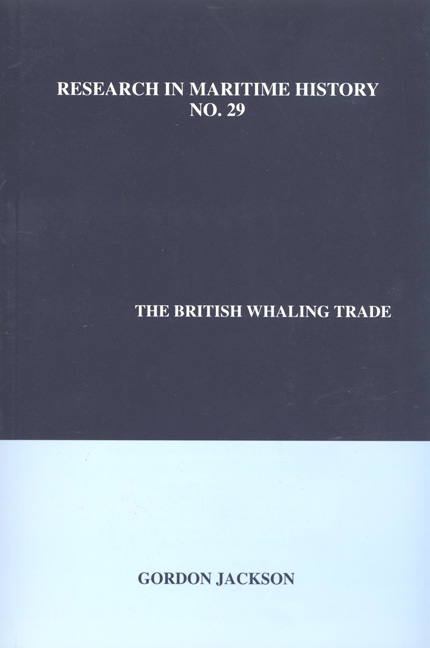Book contents
- Frontmatter
- Dedication
- Contents
- List of Tables in the Text
- List of Appendices
- New Introduction
- Preface
- Part One The Traditional Whaling Trades, 1604-1914
- Part Two The Modern Whaling Trade, 1904-1963
- Chapter 9 New Whaling Techniques
- Chapter 10 New Whaling Areas
- Chapter 11 Advances in Oil Technology
- Chapter 12 Expanding Fleets and the New Fishing Grounds, 1919-1920
- Chapter 13 Crisis and Contraction, 1929-1932
- Chapter 14 Regulated Recklessness, 1932-1939
- Chapter 15 The Final Fling, 1945-1963
- Conclusion
- Appendices
- Select Bibliography
- Additional Bibliography
- Index
Chapter 9 - New Whaling Techniques
from Part Two - The Modern Whaling Trade, 1904-1963
- Frontmatter
- Dedication
- Contents
- List of Tables in the Text
- List of Appendices
- New Introduction
- Preface
- Part One The Traditional Whaling Trades, 1604-1914
- Part Two The Modern Whaling Trade, 1904-1963
- Chapter 9 New Whaling Techniques
- Chapter 10 New Whaling Areas
- Chapter 11 Advances in Oil Technology
- Chapter 12 Expanding Fleets and the New Fishing Grounds, 1919-1920
- Chapter 13 Crisis and Contraction, 1929-1932
- Chapter 14 Regulated Recklessness, 1932-1939
- Chapter 15 The Final Fling, 1945-1963
- Conclusion
- Appendices
- Select Bibliography
- Additional Bibliography
- Index
Summary
In the middle of the nineteenth century the British whaling trade had been overtaken by an entrepreneurial and technical paralysis that was barely hidden by the continuing activity in Scotland. Faced with difficulties on both the demand and supply side, the industry prepared itself for its supposedly inevitably doom. Here, as elsewhere, modern scholars might detect not so much a realistic acceptance of fate as a diminution of the enterprise and initiative that had created the trade in the first place. Capitalists were leaving the trade; young whalermen were no longer entering it. A huge fund of bravery and skill was resting on its laurels, its only answer to changing conditions being to push both bravery and skill beyond the limits of physical endurance. This very doggedness of the last whalermen has earned them a fine reputation; but as businessmen they were ultimately a failure. They lacked the resilience and ability to change that was essential for survival. They did not seek out and exploit new opportunities. Above all, in their determination to press traditional whaling to its limits, they consistently ignored the most significant developments that were to lead to modern whaling. The sad irony is that despite the sacrifice in fortunes and fingers, there were more whales off the coast of Scotland than there were off the coast of Greenland. But the Scotsmen could not catch them, and, apart from unsuccessful experiments by Peterhead men in the 1840s, made no serious attempt to do so.
Thus, by default, the initiative in whaling passed to those who could approach it afresh, adopting new methods to answer new circumstances. The crucial decision was how to use steam power. There were two possibilities, one obvious, and the other less so. The obvious one, chosen by the British, was to use steam to drive the traditional pelagic whaler; basically, that is, to get it to and from the whaling grounds, and assist its mobility while there. The less obvious one was to apply steam to the boats which actually did the fishing, thus increasing their speed and manoeuvrability, and enabling them to go more than a rowing boat's distance from base. The British were undoubtedly correct in surmising that such vessels would not earn their keep in the declining Arctic fishery. What they did not recognize was their immense potential if used along the coastline of Europe.
- Type
- Chapter
- Information
- The British Whaling Trade , pp. 141 - 152Publisher: Liverpool University PressPrint publication year: 2004



